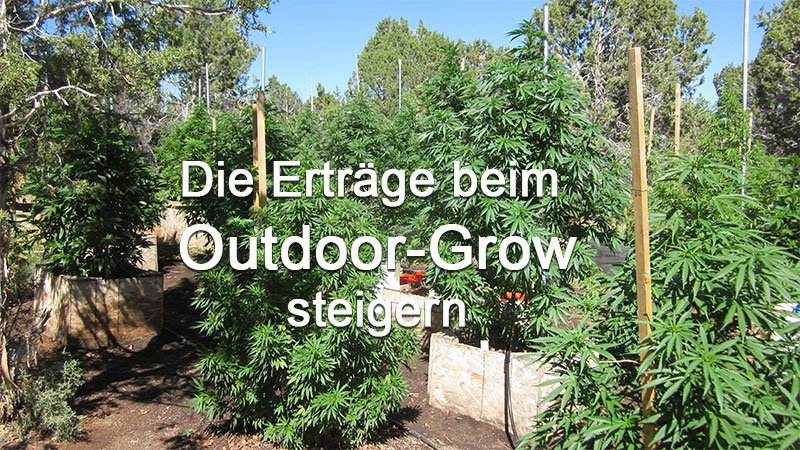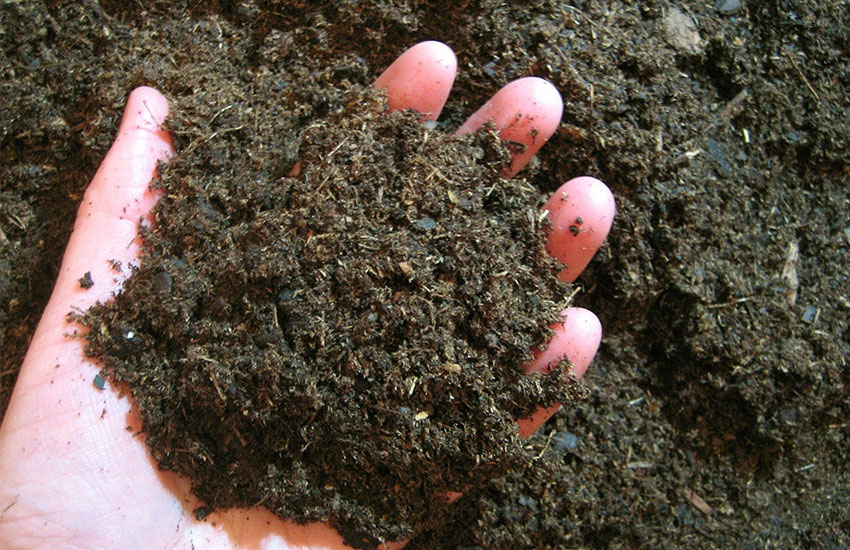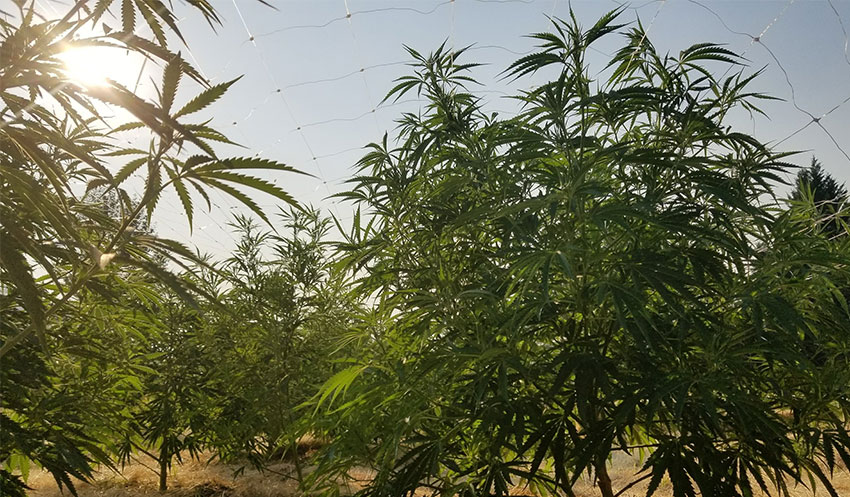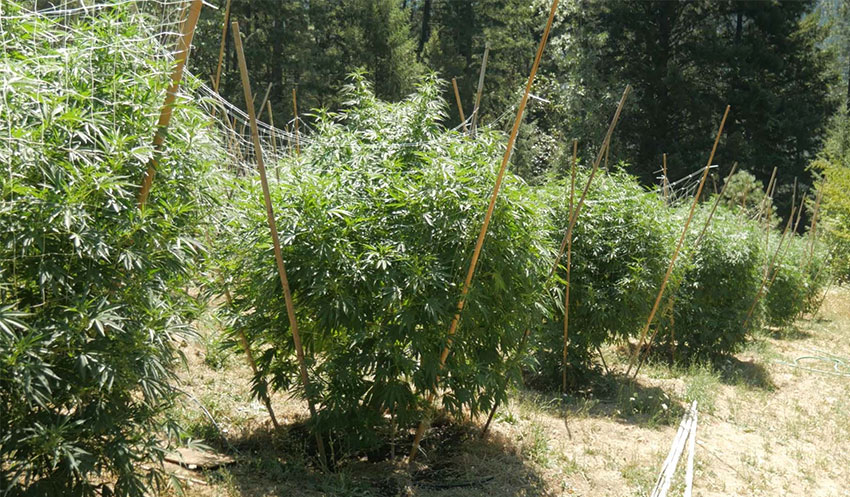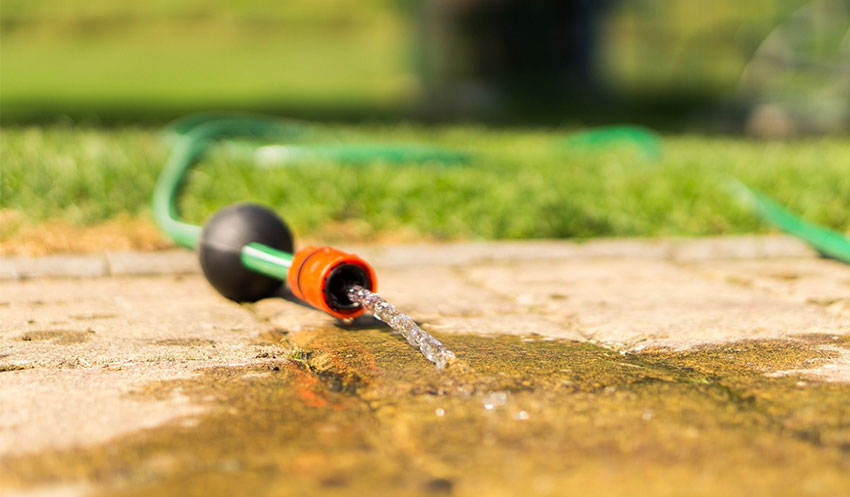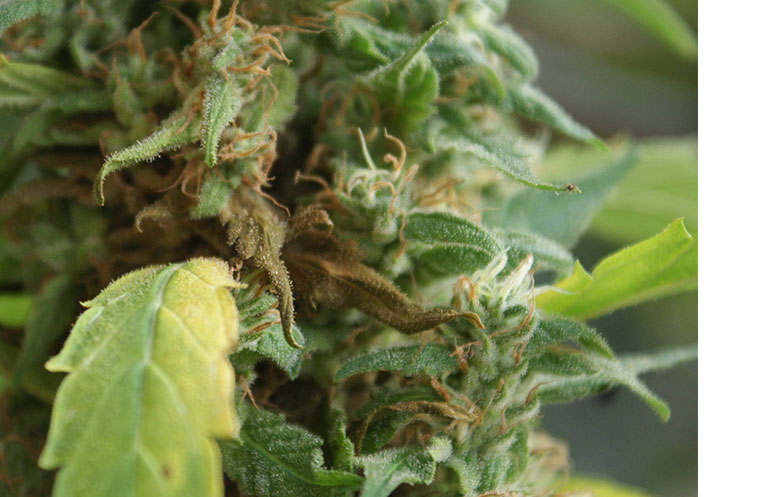How to increase your outdoor grow yields
Outdoor grow is a popular method to grow cannabis plants yourself and is currently in full swing. In contrast to the complex cultivation indoors or in a greenhouse, outdoor growing does not require a lot of equipment.
Nevertheless, various things need to be taken into account here as well, so that the plants can develop optimally and are protected from damage. In the following article we have compiled some valuable tips that will help you to get the most out of your plants:
Choosing the right cannabis strain
There are countless different cannabis strains, and not all of them are suitable for outdoor cultivation in more northern latitudes. To grow successfully in cooler regions and achieve high yields, weather-resistant and early-flowering strains are best suited, e.g. Indicas or autoflowering cannabis strains.
A high resistance to mould is also an advantage, as this is a common problem, especially in the flowering phase.Many experienced outdoor growers have a favourite variety, but generally there are numerous species that have proven to be well suited. Therefore, beginners should experiment a little and try out several varieties.
A good soil ensures increased yields
For a successful outdoor grow, good soil is of great importance. Therefore, the following points should be taken into account in advance:
Type of soil:
In order for the cannabis plants to be optimally supplied with water and nutrients, the composition of the soil plays an important role. If a soil is too sandy, hardly any water can be stored, while a clay content that is too high means that the water cannot drain off well, so that mould can form, among other things.
If the soil is not optimal, a special soil mixture for cannabis plants can be used.
In any case, when growing outdoors, it makes sense to dig a hole when "releasing" the cannabis plants and fill it with high-quality and nutrient-rich soil. Good soil is the basic prerequisite for high and potent yields.
PH value:
The ideal pH value of the soil is 6.5-7. In this range, the nutrients can be absorbed best by the plants. If the pH value is below 5.5 or above 7.0, the nutrients cannot be absorbed quickly enough or sufficiently by the plants.
Lime can be used to increase the pH value of the soil, which is often necessary especially in coniferous forests. Here the soil is usually very acidic. Sulphur can be used to lower the pH value of the soil. Even if it is possible to adapt the existing soil to the needs of the cannabis plant, it is still advantageous if the conditions of the soil are already close to optimum. Then there will be fewer fluctuations during the growth phase.
Dolomite lime e.g. Dolomita stabilises the pH of the soil and adds magnesium and calcium. It should be mixed into the soil before the plants are planted.
Nutrient content:
Only if the soil is able to nourish the cannabis plants well can outdoor growing be successful. A good sign for a nutrient-rich soil are so-called pointing plants, which indicate a high nitrogen content.
This includes, for example, the stinging nettle. In places with many and large nettles, good cannabis yields can often be achieved.
There are numerous organic fertilisers that can be mixed into the soil and provide cannabis plants with all the nutrients they need, for example: Pro Neem, Mega Worm from Plagron, Pre-Mix from BioBizz, Vertafort, Guano etc. Likewise, algae-based fertilisers are always a good choice to optimally nourish outdoor plants and give them an extra boost of energy: e.g., ,. Tresalgas, Plagron Alga Grow, Plagron Alga Bloom
K.I.S.
Keep - It - Simple! Don't think too much about your cannabis garden. Observe the plants and changes in the leaves, but don't go into frantic action if you notice a change. Above all, 3 things are important: sun, water and soil.
Sufficient sunlight
Cannabis plants need plenty of sunlight to grow well and produce the best yields. Make sure your plants get enough sunlight. Move the plants (if they are in a container) if a tree or building restricts sunlight. The more sunlight, the higher the yields.
Do not bring the plants outside too early
The daily duration of light exposure is important for the life cycle of cannabis plants. When the days become shorter and the plant receives less sunlight, this is a signal for it to start flowering. If the plant is put outside too early and there is not yet enough sun, flowering can start prematurely. On the other hand, it can also happen that the cannabis plant thrives outside from the beginning of April despite less sunlight, but then "forgets" to flower in late summer because it has become accustomed to less light.
For high yields, it is therefore important to find the optimal time for releasing the young plants. A good time for many growers in cooler regions is 1 June, but the respective climate must always be considered individually.
Training, pruning
Plant training and pruning can increase yields. Topping, the use of trelline nets or trellises, super cropping and low stress training help to produce more and larger flowers that can be optimally exposed to sunlight.
More information about cropping, topping and super cropping can be found here:
- Super Cropping
- Fimming - pruning for advanced users
- How do you top a cannabis plant and take a head cutting from it?
- How do I prune cannabis plants correctly?
- Breeding a cannabis monster through different training methods
Enough water
Especially when the temperatures rise and the cannabis plants increasingly reach a considerable size, sufficient water supply must be ensured. Only if the outdoor plants receive enough water can they grow quickly, become bigger and produce high yields.
Protect from pests
Especially in the early days, young cannabis plants are at risk of being eaten by animals. This is one of the reasons why cannabis plants should initially be grown indoors until they are no longer interesting for birds or insects. Since the plants are often attacked by slugs, it has proven useful to sprinkle slug pellets over a large area around the cultivation site.
Another danger is deer and other wild animals, which could eat young plants in particular. A wire mesh fence can help here, but it is important to remember that the outdoor grow can also be discovered more easily through this.
Regular and thorough inspections can quickly detect any pest infestation that may be present. Often there is still the possibility to take appropriate measures to save the cannabis plants from major damage. Here, the use of natural and effective agents such as Neem, Cinnamon extract, or the use of various natural spraying solutions.
–> Checklist for pests at the grow
Avoid mould formation
Unfortunately, cannabis plants tend to develop mould, especially during flowering in late summer, which can ruin the harvest. This risk can be reduced by choosing special varieties for outdoor growing that have an increased resistance to mould. However, even with these cannabis plants, there is no guarantee that mould will not occur.
Mould on the flowers is caused by high humidity, which occurs mainly at the end of the flowering period. Nevertheless, harvesting should not be done too early, as increased yields can only be achieved if the flowers have enough time to develop. If, on the other hand, mould is already present, it may make sense to harvest the entire crop directly to avoid further yield losses. If it is still too early to harvest, infested areas of the cannabis plants can be removed. In addition to the mouldy areas, at least 1 centimetre of the healthy plant should always be cut away.
If the cannabis plants are completely sheltered from the wind, this can promote mould growth. Rain and condensation water collects on the flowers and dries with difficulty. Although cannabis plants should be protected from too much wind, complete windlessness is not very useful either.
Conclusion: Impressive results can be achieved through good conditions and various measures
Outdoor grow does not mean that the cannabis plants can simply be left to their own devices. Although much less effort is required than when growing indoors, the soil conditions must still be checked and influenced if necessary. The plants should also be carefully checked for pests so that appropriate measures can be taken in time.
If you learn a little about the requirements for successful cannabis cultivation and explore your surroundings well, you can achieve good results even as a beginner in outdoor growing.
This might also interest you:






